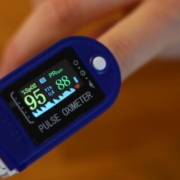What are the symptoms of low oxygen levels?
What is Blood Oxygen Level?
Blood oxygen level is a crucial measure indicating the amount of oxygen circulating in our blood. Essentially, red blood cells are responsible for transporting oxygen from the lungs to the body’s various parts. Interestingly, too little or too much oxygen can have serious health consequences. Therefore, it’s vital to seek immediate medical care if blood oxygen levels fall significantly. Similarly to how we monitor blood pressure or blood sugar, keeping an optimal blood oxygen level is essential for maintaining good health.
What Should Your Oxygen Level Be?
Under normal conditions, oxygen saturation levels should range between 95% to 100%. If levels fall below this range, one must consult a doctor. Moreover, oxygen levels between 91% and 95% might indicate an underlying condition, urging immediate medical consultation. Notably, a level below 90% signals a medical emergency, known as hypoxemia, requiring urgent care. Furthermore, if oxygen saturation dips below 85%, it severely affects the brain, potentially leading to vision changes and loss of consciousness. Alarmingly, levels below 80% impact the brain, liver, and other vital organs significantly. Lastly, cyanosis, which indicates a saturation below 67%, presents as a bluish tinge on the skin or mucous membranes due to insufficient oxygen.
Symptoms of Low Oxygen Levels
Interestingly, hypoxemia, or the condition of having unusually low blood oxygen, triggers a variety of symptoms that can vary significantly from person to person depending on how low the oxygen level is. Common symptoms include shortness of breath, headaches, restlessness, dizziness, rapid breathing, chest pain, confusion, high blood pressure, lack of coordination, visual disorders, a sense of euphoria, and a rapid heartbeat. Furthermore, extremely low levels lead to cyanosis, which is marked by a bluish discoloration of the skin around the lips and fingernails.
Preventing Low Oxygen Levels
Fortunately, with the right medical advice combined with specific changes in lifestyle and food habits, we can maintain appropriate blood oxygen levels and prevent them from getting too low. Healthcare workers recommend adopting a nutritious diet, considering yoga and breathing exercises, exercising regularly, using preventive medications such as inhalers, and avoiding triggers that may cause breathing difficulties. Additionally, keeping yourself hydrated, stopping smoking, and avoiding secondhand smoke are crucial steps. Treating the underlying condition responsible usually improves blood oxygen levels. For individuals living with chronic lung diseases or those who have contracted COVID-19, regular blood oxygen monitoring might be necessary. Adopting lifestyle changes, in conjunction with oxygen therapy, could significantly help raise their oxygen saturation levels. Early diagnosis and appropriate treatment are the keys to avoiding complications and ensuring good health. Therefore, booking an appointment with specialists in the field to get the right medical advice is highly recommended.
Disclaimer
This information serves to promote broad consumer understanding and knowledge of various health topics. Importantly, it is not intended to be a substitute for professional medical advice, diagnosis, or treatment. Always seek the guidance of your physician with any questions you may have regarding a medical condition or treatment. Moreover, never disregard professional medical advice or delay in seeking it because of something you have read on this website.
References:


